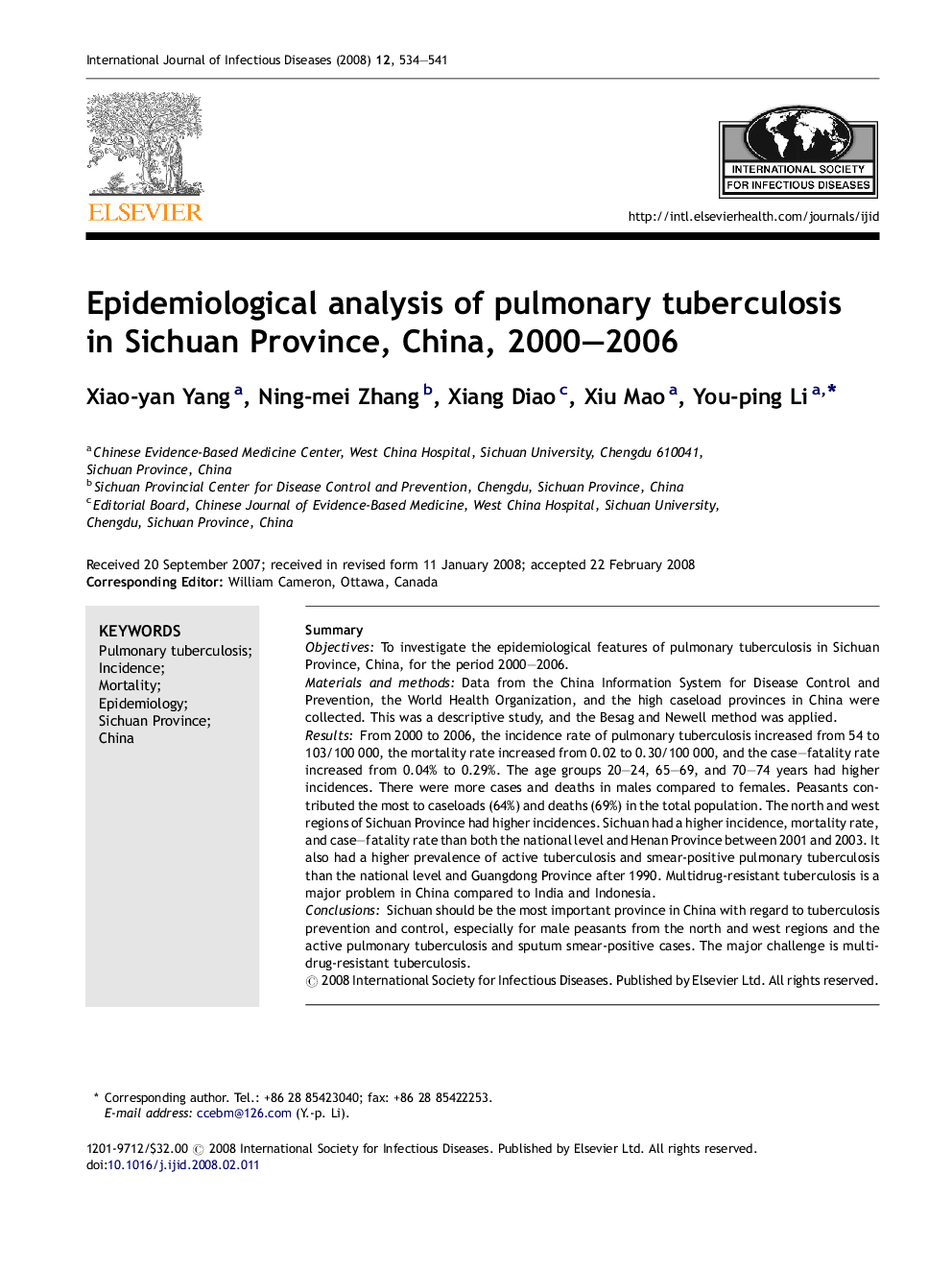| Article ID | Journal | Published Year | Pages | File Type |
|---|---|---|---|---|
| 3364595 | International Journal of Infectious Diseases | 2008 | 8 Pages |
SummaryObjectivesTo investigate the epidemiological features of pulmonary tuberculosis in Sichuan Province, China, for the period 2000–2006.Materials and methodsData from the China Information System for Disease Control and Prevention, the World Health Organization, and the high caseload provinces in China were collected. This was a descriptive study, and the Besag and Newell method was applied.ResultsFrom 2000 to 2006, the incidence rate of pulmonary tuberculosis increased from 54 to 103/100 000, the mortality rate increased from 0.02 to 0.30/100 000, and the case–fatality rate increased from 0.04% to 0.29%. The age groups 20–24, 65–69, and 70–74 years had higher incidences. There were more cases and deaths in males compared to females. Peasants contributed the most to caseloads (64%) and deaths (69%) in the total population. The north and west regions of Sichuan Province had higher incidences. Sichuan had a higher incidence, mortality rate, and case–fatality rate than both the national level and Henan Province between 2001 and 2003. It also had a higher prevalence of active tuberculosis and smear-positive pulmonary tuberculosis than the national level and Guangdong Province after 1990. Multidrug-resistant tuberculosis is a major problem in China compared to India and Indonesia.ConclusionsSichuan should be the most important province in China with regard to tuberculosis prevention and control, especially for male peasants from the north and west regions and the active pulmonary tuberculosis and sputum smear-positive cases. The major challenge is multidrug-resistant tuberculosis.
